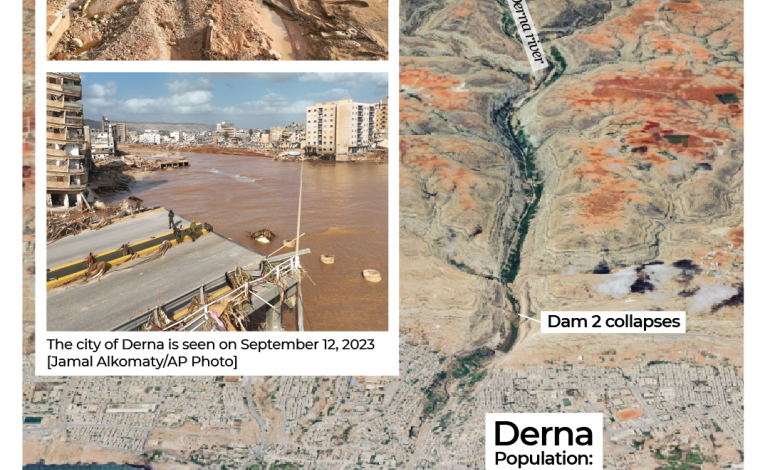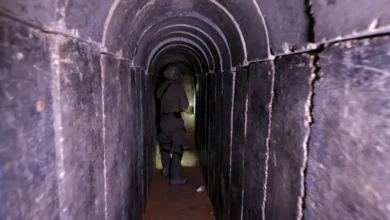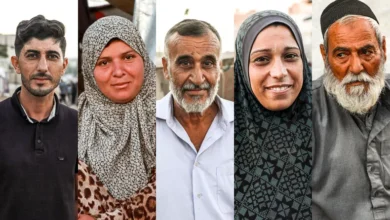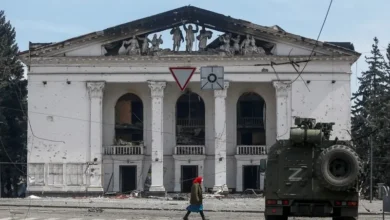Natural disaster or man-made, why was Libya so vulnerable to floods?

The process of retrieving the bodies washing up on Derna’s shores continues, as the death toll carries on increasing.
More than 6,000 are now confirmed to have died after Storm Daniel hit the eastern Libyan city on Sunday and Monday, leading to the failure of two dams, which burst and unleashed torrents of water through a dry riverbed and onto the city.The mayor of Derna says the death toll could be even higher – as much as 20,000 – after whole neighbourhoods were swept away into the sea.
The water that rushed into Derna was described as looking like a huge tsunami.
But while many, particularly some of Libya’s politicians, are painting what happened as purely the result of a natural disaster, experts say that corruption, poor maintenance of public infrastructure – and years of political infighting, with Libya divided between two rival administrations – have made the country unprepared to tackle an event like Storm Daniel.
“The general state of turmoil also means a lot of bickering over the allocation of funds,” said Claudia Gazzini, the International Crisis Group’s senior analyst for Libya. For the past three years there has been no development budget, which is where funds for infrastructure should fall, and no allocation for long-term projects, Gazzini said.“And none of the two governments is legitimate enough to make big plans, something that curbs focus on infrastructures,” she added.
Military forces supporting Libya’s rival governments – an internationally recognised one based in Tripoli in the west and one based in Benghazi in the east backed by the country’s parliament – have fought several times since 2014, and the administrations failed to hold planned presidential elections in 2021.Speaking to Al Jazeera on Tuesday, Derna’s Deputy Mayor Ahmed Madroud said that the dams had not been properly maintained since 2002. That means that both the government of Libya’s longtime dictator Muammar Gaddafi, and the administrations that came after he was overthrown in a revolution in 2011, had failed to ensure the upkeep of vital infrastructure.
Last year, a paper from researchers at Omar Al-Mukhtar University warned that the two dams needed urgent attention, pointing out that there was “a high potential for flood risk”. Yet no action was taken.Cycle of violence
The devastation caused by the floods was the latest tragedy for Derna – a city of about 90,000 people, traditionally known as the country’s cultural capital, before groups such as ISIL (ISIS) took advantage of the lack of a functioning state to seize it in 2014, until they were driven out the following year.
Three years later renegade general Khalifa Haftar, who is seen as the primary authority in Libya’s east, took control of Derna – which had remained the last pocket of territory in the east to reject his rule – after a brutal two-year siege. The city was torn apart by intensive bombardments and ferocious ground fighting.
The cycle of violence throughout the years has left its scars, with authorities not investing in any major rebuilding programme.










